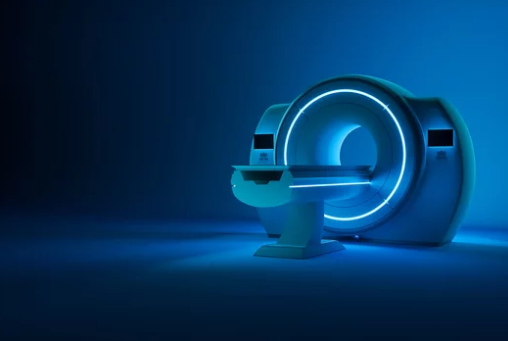Magnetic Resonance Imaging (MRI) has become one of the most important diagnostic tools in modern medicine, especially when it comes to detecting and monitoring cancer. If your doctor has recommended an MRI scan, it’s natural to feel a little anxious about the procedure. Many patients worry about what will happen during the scan, how long it will take, and whether it will be uncomfortable.
This guide will walk you through everything you need to know about having an MRI for cancer—from preparation and the actual procedure to what happens afterward—so you can feel confident and prepared.
What Is an MRI and Why Is It Used for Cancer?
An MRI (Magnetic Resonance Imaging) uses strong magnetic fields and radio waves to create highly detailed images of the inside of your body. Unlike X-rays or CT scans, MRI does not use ionizing radiation, making it a safer option for repeated imaging.
For cancer care, MRI plays a vital role in:
- Detecting tumors at an early stage
- Determining the size, location, and extent of cancer
- Checking if cancer has spread to nearby tissues or organs
- Monitoring treatment progress or recurrence
Depending on the type of cancer, your doctor may recommend a standard MRI or an advanced technique such as diffusion-weighted imaging (DWI), contrast-enhanced MRI, or multiparametric MRI.
Preparing for Your MRI Scan
Preparation is usually simple, but there are some important steps you’ll need to follow:
1. Clothing and Personal Items
You’ll likely be asked to change into a hospital gown. All metal objects—such as jewelry, watches, hairpins, belts, or credit cards—must be removed because they can interfere with the magnetic field.
2. Medical Devices and Implants
Tell your healthcare team if you have a pacemaker, cochlear implants, artificial joints, or any other implanted devices. Some devices are not MRI-compatible and could pose safety risks.
3. Eating and Drinking
For most MRI scans, you can eat and drink normally beforehand. However, if your test requires contrast dye, your doctor may ask you to avoid food or drink for a few hours prior.
4. Claustrophobia and Anxiety
If you’re worried about being in an enclosed space, let your doctor know. You may be given a mild sedative, or in some cases, an open MRI machine may be available.
What Happens During the MRI for Cancer
The actual MRI procedure usually lasts between 30 minutes and an hour, depending on the part of the body being scanned. Here’s what you can expect:
1. Entering the MRI Room
You’ll be guided to the MRI scanner, which looks like a large tunnel or tube. The machine can be intimidating at first, but it’s completely safe.
2. Positioning on the Table
You’ll lie down on a motorized table that slides into the MRI scanner. Depending on the type of cancer being investigated, cushions or straps may be used to help you stay still.
3. Use of Contrast Dye
In many cancer scans, a special contrast agent (usually gadolinium-based) is injected into your vein to highlight tumors and blood vessels more clearly. This injection may feel like a quick pinch, and afterward you might feel a cool sensation in your arm.
4. The Scanning Process
Once inside the scanner, you’ll hear loud knocking or humming noises. This is normal and comes from the magnetic coils working to capture images. You’ll be given earplugs or headphones to reduce noise. It’s important to stay very still, as movement can blur the images.
5. Communication with the Technologist
You won’t be alone. The MRI technologist will monitor you from another room and can speak with you through an intercom. If you feel uncomfortable at any point, you can alert them.
How Long Does an MRI Take for Cancer?
The length of the scan depends on the area being examined.
- Brain or head MRI: 30–45 minutes
- Breast MRI: 45–60 minutes
- Abdominal or pelvic MRI: 45–75 minutes
- Whole-body MRI: Up to 90 minutes
If contrast dye is used, the scan may take a little longer.
After the MRI: What to Expect
1. Immediate Recovery
Most patients can go home right after the MRI, even if contrast dye was used. The dye leaves your body naturally through urine within 24 hours. Drinking extra water can help flush it out.
2. Possible Side Effects
Side effects are rare but may include mild headaches, nausea, or dizziness from the contrast dye. If you have a history of kidney problems or allergies, let your doctor know before the scan.
3. Getting Results
Your MRI images will be analyzed by a radiologist, who will send a detailed report to your oncologist or doctor. Depending on the urgency, results may take anywhere from 24 hours to a few days.
Benefits and Limitations of MRI for Cancer Detection
Benefits
- Non-invasive and painless
- No radiation exposure
- Produces highly detailed soft-tissue images
- Effective for detecting tumors in the brain, spinal cord, breast, liver, and prostate
Limitations
- Not suitable for patients with certain implants or devices
- Can be time-consuming compared to other scans
- Expensive compared to X-ray or ultrasound
- Claustrophobia can be a challenge for some patients
Tips to Make Your MRI Experience Easier
- Wear loose, comfortable clothing without metal fasteners.
- Practice deep breathing or meditation before the scan if you’re anxious.
- Ask about music or guided relaxation through headphones.
- Bring a friend or family member for support if you’re feeling nervous.
- Follow all preparation instructions carefully to avoid delays.
Final Thoughts
Undergoing an MRI for cancer may seem intimidating at first, but understanding what to expect can make the experience far less stressful. It’s a safe, non-invasive procedure that provides doctors with detailed information essential for accurate cancer diagnosis and treatment planning.
By preparing ahead of time, following instructions, and staying calm during the process, you can ensure that your MRI goes smoothly and provides the best possible results for your care.
Also Read :
